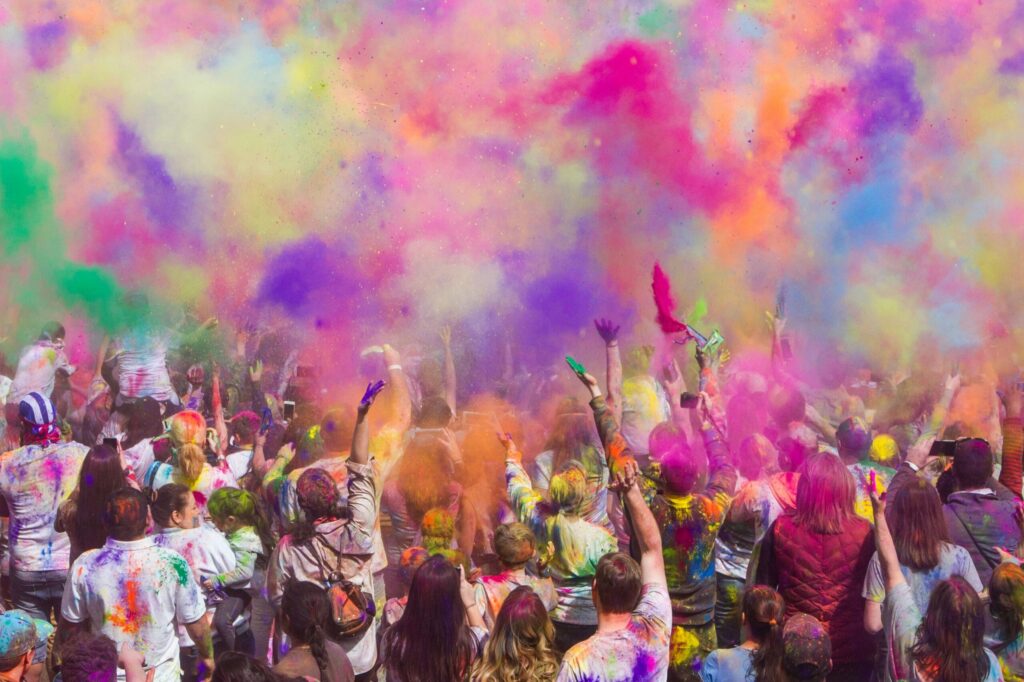Be sociable
Want to hear more from us? Then here's some of our favourite hangouts...
Jubilee Business Park,
2 Jubilee Pkwy, Derby DE21 4BJ
Koobr Ltd.
Registered in England: 08353557

Colour is a feature of every aspect of our everyday lives, and yet it’s something we often overlook. It shapes moods, triggers emotions, and silently influences the decisions we make. Which is exactly why it’s such a powerful tool when it comes to branding.
Far more than decoration, colour is a critical part of visual communication. The choices you make can affect how people perceive your brand at first glance, and how they continue to feel about it over time. If you want your branding to do more than just look good, it needs a colour strategy built on insight.
So, let’s take a closer look at how colour psychology works, and how to use it to your brand’s advantage.
Colour psychology explores how specific colours can influence our behaviour, emotions, and decisions, and it’s been proven time and again to play a key role in marketing. But here’s the catch, colour associations can vary depending on a multitude of factors such as cultural context and personal experience, so while colour can be powerful, how you use it depends on who you’re speaking to.
This is why your colour palette shouldn’t be picked based on personal preference or design trends. It should be rooted in meaning, and aligned with your audience, industry and brand values.
There are no hard-and-fast rules, but some colours have developed widely recognised associations:
• Red is bold, urgent and passionate. Often use in food and retail to grab attention or spark desire, but it can also signal danger or aggression.
• Blue feels calm, dependable and trustworthy. A go-to for finance, healthcare and corporate brands aiming to build credibility.
• Green represents nature, growth and wellbeing. Perfect for brands focused on sustainability, health or eco-conscious living.
• Yellow radiates optimism, energy and creativity. Often used by playful or youth-focused brands to inject a touch of positivity.
• Black signals sophistication, exclusivity and luxury, but can also feel serious or sombre if not balanced carefully.
When you understand what your colours say, you can make sure they’re saying the right thing about your brand.
Before you dive into a colour wheel, get crystal clear on who you are and who you’re talking to. What’s your brand personality? What do you want people to feel when they encounter you? How do you want to be remembered?
Once you know the answers, your colour palette should:
1. Reflect your brand values and audience expectations
2. Differentiate you from competitors
3. Be practical across all applications, from screen to print to signage
It’s also worth thinking about hierarchy. Your primary colour should dominate, supported by complementary secondary colours and accents that can add energy or contrast where needed. And always remember accessibility. Make sure your colour combinations meet contrast standards for readability and inclusivity.
When you think of Tiffany, what comes to mind? Blue. Coca-Cola? Red. These brands didn’t just choose colours, they owned them.
Consistency is what turns colour into identity. Using the same palette across every touchpoint, from packaging to digital to social media, helps build familiarity and trust.
Just because a shade is everywhere this year, doesn’t mean it’ll work for your brand. Aim for timeless over trendy if you want longevity.
Your palette needs to look good and function well, especially for users with visual impairments. Design should always be inclusive.
One tone on your website and another on your brochure? That’s how recognition for your brand starts to fade. Stay consistent across the board.
When done right, colour doesn’t just dress your brand, it helps define it. It sets the tone, shapes perception and builds emotional connection before you’ve said a single word. At Koobr, we specialise in brand design that speaks volumes, using colour to cut through, captivate and convert.